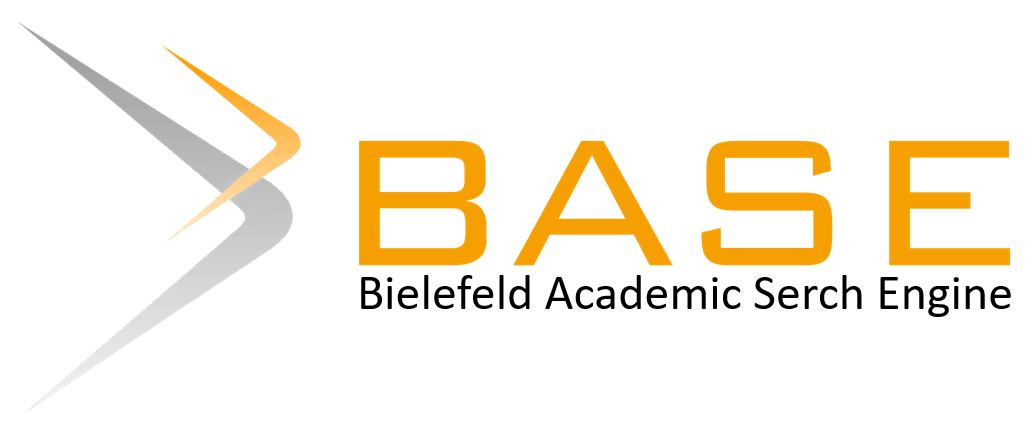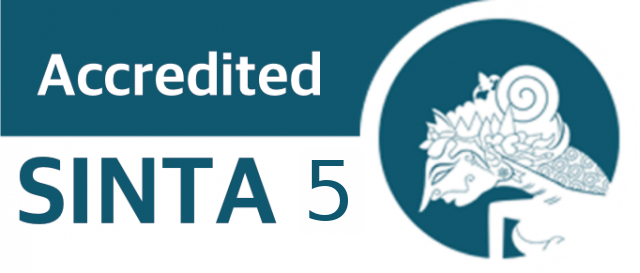MEKANISME KERJA ANDROGRAFOLIDA DARI SAMBILOTO SEBAGAI SENYAWA ANTIOKSIDAN
DOI:
https://doi.org/10.30595/hmj.v4i1.8825Keywords:
andrographolide, antioxidant, sambilotoAbstract
Andrographolide is the main bioactive compound derived from sambiloto, Andrographis paniculata. Andrographolide compounds can potentially be used as phytopharmaca substances. Andrographolide has very broad pharmacological aspects, including anti-inflammatory, anticancer and anti-diabetic. The pharmacological aspects possessed by andrographolide are probably closely related to the chemical profile and the mechanism of action of andrographolide as an antioxidant in counteracting free radicals. Therefore, it is important to know the chemical profile and mechanism of action of andrographolide compounds as antioxidants to understand the mechanism of action of these compounds in dealing with various diseases. This study is based on a review of related literature. Based on the literature review, it was found that the mechanism of action of andrographolide as anti-cancer, anti-inflammatory and anti-dyslipidemia is closely related to the mechanism of action of this compound as an antioxidant. The unsaturated γ- lactone structure at C13 and C14 of andrographolide can neutralize superoxide anions. The double bond in this carbonyl ester group will affect the deprotonization of the H atone located at C15 so that the H atoms on C15 will be easily extracted by the highly reactive superoxide anion. Thus, andrographolide can stop the chain reaction of a radical molecule. This mechanism can cause andrographolide compounds to play a role in reducing the effects of free radicals in various diseases.References
- Direktorat Obat Asli Indonesia, Badan POM RI. Acuan Sediaan Herbal. Vol:5. (2012).
- Departemen Kesehatan RI, Direktorat Jenderal Pengawasan Obat dan Makanan, Direktorat Pengawasan Obat Tradisional. Pedoman
Pelaksanaan Uji Klinik Obat Tradisional. (2000). - Kumoro AC and Hasan M. Modelling of andrographolide extraction from Andrographis paniculata leaves in soxhlet extractor. Proceeding of the 1st International Conference on Natural Resources Engineering & Technology, 24-25th July 2006. Putrajaya Malaysia. 664-670. (2006). http://eprints.undip.ac.id/246/1/CPE78_-_Masitah_Hasan.pdf
- Chao W.W and Lin B.F. Isolation and identification of bioactive compounds in Andrographis paniculata (Chuqnxinlian). Chi. Med. 5:17. (2010). https://pubmed.ncbi.nlm.nih.gov/20465823/
- Yang L, Wu D, Luo K, Wu S, Wu P. Andrographolide enhances 5-flourouracil-induced apoptosis via caspase-8 dependent mithocondrial pathway involving p53 participation in hepatosellular carcinoma (SMMC-7721) cell. Cancer Letter. 276: 180-188. (2009). https://pubmed.ncbi.nlm.nih.gov/19097688/
- Umadevi U, Kamalam M. Phytochemical and Antioxidant studies on an important indigenous medicinal plant- Andrographis paniculata Nees. International Journal of Pharmateutical Sciences and Research. Vol(12): 5240-5244. (2014).
- Pusat Data dan Informasi Kementerian Kesehatan RI. Situasi Penyakit Kanker di Indonesia. (2015).
- Sharma M, Sharma RG. Identification, purification and quantification of andrographolide from Andrographis paniculata (Burm F) Nees by HPLC at different stages of life cycle of crop. J. Curr. Chem. Pharm. Sc. 3(1): 23-32. (2013). https://www.tsijournals.com/articles/identification-purification-and-quantification-of-andrographolide-from-andrographis-paniculata-burm-f-nees-by-hptlc-at-d.pdf
- Panossian A, Davtyan T, Gukassyan N, Gukasova G, Mamikonyan G, Garielian E, et al. Effect of andrographolide and kan jang fixed combination of extract SHA-10 and extract SHE-3 on proliferation of human lymphocytes, production of cytokines and immune activation markers in the whole blood cells culture. Phytomed. 9:598-605. (2002).https://pubmed.ncbi.nlm.nih.gov/12487323/
- Chung Y. Andrographis paniculata. Handbook of Traditional Chinese Medicine, Guangzhou. (1979).
- Guo, S.Y., D.Z. Li, W.S. Li, A.H. Fu, and L.F. Zhang. Study of the toxicity of andrographolide in rabbits. J. Beijing Med. Univ. 5:422-28. (1998).
- Jarukamjorn K, Nemoto N. Pharmacological aspect of Andrographis paniculata on health and its major diterpeniod constituent andrographolide. J Health Sci. 54(4): 370-81. (2008).http://jhs.pharm.or.jp/data/54(4)/54_370.pdf
- Suharmiati. Isolasi dan Identifikasi Andrografolida dari herba Andrographis paniculata Ness. ITB Central Library. Media Litbang Kesehatan. 11(2). (2011).
- Widyawati T. Aspek farmakologi sambiloto (Andrographis paniculata Nees). Majalah Kedokteran Nusantara. Vol 40. No. 3. (2007).http://repository.usu.ac.id/bitstream/handle/123456789/18735/mkn-sep2007-40%20%2810%29.pdf?sequence=1&isAllowed=y
- Murray RK, Granner DK, Rodwell VW. Biokimia Harper. Ed ke-27. Pendit BU, penerjemah; Jakarta: EGC. Terjemahan dari: Harper’s Illustrated Biochemistry,27th ed. (2009).
- Halliwell B, Gutteridge JMC. Freen Radicals in Biology and Medicine. London: Oxford Univ. (1999)
- Peck M D. Interaction of lipid with immune function I: biochemical effect of dietary lipid on plasma membranes. Nutrition Biochemistry Journal. Vol (5): 466-467. (1994).
- Gilbert DL. Perspective on The History of Oxygen and Life, Oxygen and The Living Process: An Interdiciplinary Approach. Springer Verlag, New York, 1-43. (1981).
- Harman D. Aging, a Theory Based on Free Radical and Radiation Chemistry. J. Gerontol. 11:298-300. (1956).
- Vasan S, Foiles P, Found H. Theurapetic potential of breaker of advanced glycation end product –protein crosslinks. Arch Biochem Biophys. 419: 89-96. (2003).
- Halliwell B, Auroma OI. DNA and Free Radical. Boca Raton Press. (1993).
- Stadtman ER. Protein oxidation and aging. Science. 257: 1220-25. (1992).
- Shririsha K, Mastan M. Andrographis paniculata and its bioactive phytochemical constituents for oxidative damage: a systemic review. Pharmacophore. Vol 4(6): 212-229. (2013).https://pharmacophorejournal.com/storage/models/article/HYcJoySakNOdjIirAuGrc1m9R6huZzjKNaBiAqPuqF5lRJKO3xPVZ12vZ61i/andrographis-paniculata-and-its-bioactive-phytochemical-constituents-for-oxidative-damage-a-system.pdf
- Singh RP. Banerjee D, Rao AR. Modulatory influence of Andrographis paniculata on mouse hepatic and extrahepatic carcinogen metabolizing enzymes and antioxidant status. Phytother Res. 15: 382-390. (2008).https://pubmed.ncbi.nlm.nih.gov/11507728/
- Shen YC, Chen CF, Chiou WF. Andrographolide prevents oxygen radical production by human neutrophils: possible mechanism(s) involved in its anti-inflammatory effect. British Journal of Pharmacology. 135:399-406. (2002).https://pubmed.ncbi.nlm.nih.gov/11815375/
- Dutta M, Ghosh AK, Jain G, Rangari V, Chattopadhyay A, Das T, Bhowmick D, et al. Andrographolide, one of the major components of Andrographis paniculata protects against copper-ascorbate induced oxidative damages to goat cardiac mitochondria in vitro. Int. J. Pharm. Sci. Rev. Res. 28(1): 237-247. (2014).
- Umadevi U, Kamalam M. Phytochemical and antioxidant studies on an important indigenous medicinal plant- Andrographis paniculata (Burm.F) Nees. International Journal of Pharmaceutical Sciences and Research. Vol 5(12): 5240-5244.https://ijpsr.com/bft-article/phytochemical-and-antioxidant-studies-on-an-important-indigenous-medicinal-plant-andrographis-paniculata-burm-f-nees/?view=fulltext
- Zhang Z. reaction and Computational Studies of Andrographolide Analogues with Glutathione and Biological Nucleophiles [thesis]. City Univ of Hongkong: October 2007.
- Chen HW, Huang YJ, Yao HT, Lii CK. Introduction of nrf2-dependent antioxidation and protection against carbon tetrachloride-induced liver damage by andrographis paniculata ethanolic extract. J Tradit Complement Med. 325(1): 226-35. (2008).
- Risdawati. Mekanisme Kerja Andrografolida dari Sambiloto (Andrographis paniculata, Nees) sebagai Senyawa Antimalaria: Kajian terhadap status oksidatif Plasmodium berghei ANKA. [disertasi]. Program Doktor Ilmu Biomedik Universitas Indonesia. (2014).
Downloads
Published
Issue
Section
License
For submission of manuscripts to the Herb-Medicine Journal, the authors must certify that:
I have been authorized by my co-author to submit the manuscript to the Herb-Medicine Journal
I hereby declare, on behalf of myself and my co-authors, that:
The submitted manuscript is original work and has not been published in another peer-reviewed journal or is being considered for publication by another journal. Also, the manuscript does not infringe any existing copyright or other third party rights.
The manuscript does not contain material that may violate the law, slander, or SARA, in any way, violates the terms and conditions contained in the agreement
I/we have taken care that the scientific knowledge and all other statements contained in the manuscript are in accordance with authentic facts and formulas and will not, if followed appropriately, harm the user
No liability shall be assumed by Herb-Medicine Journal, its staff or members of the editorial board for any injury and/or damage to persons or property as a matter of product liability, negligence or otherwise, or from the use or operation of any method, product instructions, advertising , or ideas contained in publications by the Herb-Medicine Journal
Authors who publish in the Herb-Medicine Journal certify that all authors have read and agree to the contents of the Cover Letter or the Terms and Conditions. Plagiarism is strictly prohibited, and by submitting a manuscript for publication, the author agrees that the publisher has the legal right to take appropriate action against the author, if plagiarism or false information is found. Once submitted to the Herb-Medicine Journal, authors will not withdraw their manuscript at any stage prior to publication.
The author owns the copyright and grants the journal rights for first publication with the work simultaneously licensed under a Creative Commons Attribution License which allows others to share the work with acknowledgment of the work's authorship and initial publication in this journal.
Authors may enter into separate additional contractual agreements for the non-exclusive distribution of the published journal version of the work (for example, posting it to an institutional repository or publishing it in a book), with acknowledgment of its initial publication in this journal.
Authors are permitted and encouraged to post their work online (for example, in institutional repositories or on their websites) prior to and during the submission process, as this can lead to productive exchanges, as well as earlier and larger citation of published work (See The Effects of Open Access).
Untuk pengiriman naskah ke Herb-Medicine Journal, penulis harus menyatakan bahwa:
- Saya telah diberikan otorisasi oleh rekan penulis saya untuk memasukkan naskah ke Herb-Medicine Journal
- Saya dengan ini menyatakan, atas nama saya dan rekan penulis saya, bahwa:
- Naskah yang dikirimkan adalah karya asli dan belum pernah diterbitkan dalam jurnal peer-review lain atau sedang dipertimbangkan untuk diterbitkan oleh jurnal lain. Serta, naskah tidak melanggar hak cipta yang ada atau hak pihak ketiga lainnya.
- Naskah tidak mengandung materi yang mungkin melanggar hukum, memfitnah, atau SARA, dengan cara apa pun, melanggar syarat dan ketentuan yang tercantum dalam perjanjian
- Saya / kami telah berhati-hati bahwa pengetahuan ilmiah dan semua pernyataan lain yang terkandung dalam naskah sesuai dengan fakta dan formula otentik dan tidak akan, jika diikuti dengan tepat, merugikan pengguna
- Tidak ada tanggung jawab yang ditanggung oleh Herb-Medicine Journal, stafnya atau anggota dewan editorial untuk setiap cedera dan/atau kerusakan pada orang atau properti sebagai masalah pertanggungjawaban produk, kelalaian atau sebaliknya, atau dari penggunaan atau pengoperasian metode, produk apa pun instruksi, iklan, atau ide yang terkandung dalam publikasi oleh Herb-Medicine Journal
Penulis yang menerbitkan dalam Herb-Medicine Journal menyatakan bahwa semua penulis telah membaca dan menyetujui isi Surat Pengantar atau Syarat dan Ketentuan. Plagiarisme dilarang keras, dan dengan menyerahkan naskah untuk publikasi, penulis setuju bahwa penerbit memiliki hak hukum untuk mengambil tindakan yang pantas terhadap penulis, jika ditemukan plagiarisme atau informasi palsu. Setelah diserahkan ke Herb-Medicine Journal, penulis tidak akan menarik naskah mereka pada tahap apa pun sebelum dipublikasikan.
Penulis memiliki hak cipta dan memberikan hak jurnal untuk publikasi pertama dengan karya yang secara simultan dilisensikan di bawah Lisensi Creative Commons Attribution yang memungkinkan orang lain untuk berbagi karya dengan pengakuan kepengarangan karya dan publikasi awal dalam jurnal ini.
Penulis dapat membuat perjanjian kontrak tambahan yang terpisah untuk distribusi non-eksklusif versi jurnal yang diterbitkan dari karya tersebut (misalnya, mempostingnya ke repositori institusional atau menerbitkannya dalam sebuah buku), dengan pengakuan atas publikasi awalnya di jurnal ini.
Penulis diizinkan dan didorong untuk memposting pekerjaan mereka secara online (misalnya, dalam repositori institusional atau di situs web mereka) sebelum dan selama proses pengajuan, karena dapat menyebabkan pertukaran yang produktif, serta kutipan yang lebih awal dan lebih besar dari karya yang diterbitkan (Lihat The Effect of Open Access).













